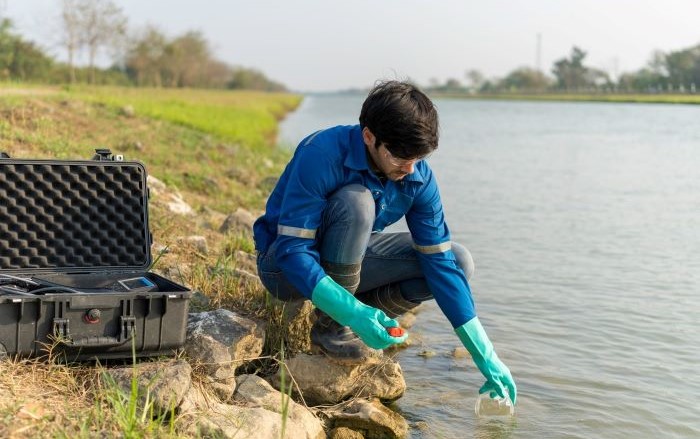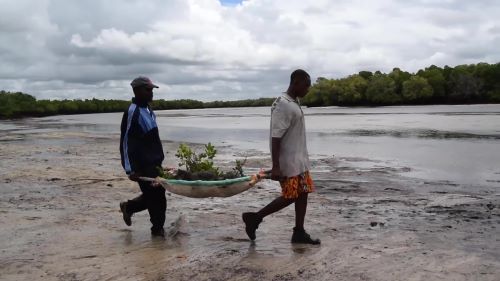Protecting & Restoring Blue Carbon Ecosystems in Kenya
Edinburgh Napier University’s Centre for Conservation and Restoration Science hosts world-leading expertise in conservation and restoration of mangrove forests and seagrass meadows. These are vital coastal ecosystems that offer biologically rich habitats, but also face a wide range of threats.
Problem:
Mangrove forests are amongst the most efficient natural carbon stores on the planet. Approximately 45% of the global pre-industrial distribution of mangroves has been lost, driven by all sorts of damaging impacts, including aquaculture, especially shrimp farming, and cutting for timber and firewood.
Solution:
Environmental biologists from our Centre for Conservation and Restoration Science have been working with colleagues worldwide on the protection and restoration of coastal ecosystems for over 25 years. In Kenya, our research has established the world’s first community-based mangrove and seagrass conservation projects funded by carbon credits.
Recovering & regenerating mangroves through community conservation
Mangroves, salt marshes and seagrass meadows are ecological marvels. Over 150 countries around the world contain at least one of these natural carbon stores. Stopping their destruction could save the emissions of half a gigatonne of CO2per year – more than the UK’s entire annual releases – but conserving theses ecosystems depends on empowering local communities to lead the effort.
Selling carbon credits on the voluntary market
In Kenya, Edinburgh Napier research helped to establish the world’s first community-based mangrove and seagrass conservation projects funded by carbon credits. Protecting these forests and marine meadows and replanting areas that have been degraded prevents carbon losses and captures new carbon from the atmosphere; this benefits people everywhere. The communities that live with and manage these ecosystems can now benefit financially from their work, by selling carbon credits and using the money to fund conservation and livelihoods.
Mikoko Pamoja was established in 2013, with its sister project Vanga Blue Forest launched in 2019. Together these initiatives protect 560 ha of mangrove forest and 215 ha of seagrass. They bring carbon benefits of more than 8000 tonnes of CO2 per year, and earn tens of thousands of dollars each year for spending on locally determined projects such as new wells, school buildings and health investments.
Partnership is central to this work. The Association for Coastal Ecosystems Services is a Scottish charity that was established to allow this new funding model to provide long term support. The Kenyan government, and especially the Kenya Marine and Fisheries Research Institute, is an essential partner, as is Plan Vivo, the world’s oldest independent carbon standard that provides accreditation for the projects.
The projects have reversed mangrove loss and degradation at the sites where they operate but also exert influence well beyond, helping to shape policy within Kenya and internationally. By demonstrating how international science and carbon finance can be applied at very local scales, to bring benefits that are owned and controlled by local people, they show that we can take action to conserve ecosystems and fight against the climate crisis.
In 2017, Mikoko Pamoja was awarded the UN’s Equator Prize. In 2023 it received the UN 'Person of the Year' award, with officials at the organisation describing it as ‘a beacon of hope’, illustrating how local actions can resonate globally. Although not an individual, it was deemed fitting to recognise the initiative as a community effort.
Our Centre for Conservation and Restoration Science
An interdisciplinary research centre committed to delivering innovative science and solutions to help conserve, rebuild and enhance biodiversity across terrestrial, freshwater and marine ecosystems.
Find out more about the Centre HERE

